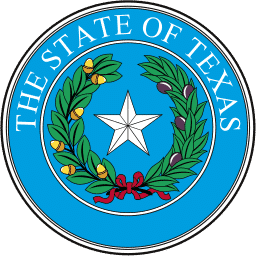…
There are about 30 physical therapy assistant schools in Texas, at community colleges and larger postsecondary institutions.
Coursework and clinical practicums typically take about two years to complete, culminating in an associate’s degree. A license is required to practice in the state, but no work experience or on-the-job training—other than that received in school—is necessary.
The future is bright for PTAs in the Lone Star State, where salaries and job growth are outpacing the national averages.
You Might Also Like:

This regulatory board enforces health and safety regulations as stipulated by Texas laws, and ensures that PTAs are qualified. It licenses practitioners, registers facilities, and investigates complaints.
The governor appoints nine board members to six-year terms. Six of the officials are licensed physical therapists, while the other three represent the public. The panel has a staff and creates committees.
The board is part of the state Executive Council of Physical Therapy and Occupational Therapy Examiners, an independent government agency. The council’s staff has three departments: administrative support, licensing, and investigations. Issuing licenses makes up about 40 percent of the workload.
To become a physical therapy assistant in Texas, a student must first earn either a high school diploma or a GED. Postsecondary education takes place at colleges that offer degree programs in the field.
At some schools, students earn bachelor’s degrees or occupational certificates. Most programs award either an associate of applied science (AAS) or an associate of science (AS). The AAS is a professional degree, while the AS is an academic degree that transfers to more advanced educational programs. Either type of diploma qualifies a graduate to pursue licensure and employment as a PTA in Texas.
A student must enroll in a school that the Commission on Accreditation in Physical Therapy Education (CAPTE) recognizes. The organization requires that education programs feature not only classroom and lab studies, but also clinical experiences in hospitals, nursing homes, outpatient clinics, or rehabilitation centers. Students must work full time at such facilities for 14-16 weeks.
Upon graduation from an accredited school, a prospective PTA must obtain a license from the state board to be eligible to practice in Texas. Requirements for the online application process include paying a fee and submitting school transcripts.
The next step is to successfully complete the National Physical Therapy Exam, which the Federation of State Boards of Physical Therapy (FSBPT) administers. Testing sites are in Dallas, Austin, San Antonio, Abilene, Odessa, Wichita Falls, Lubbock, Waco, Bedford, and Austin.
The 200-question test covers PT data collection, interventions, diseases and conditions, equipment and devices, therapeutic modalities, safety and protection, professional responsibilities, and research. A score of 600 or better is necessary to pass the exam. The FSBPT sends a student’s results to the Texas Board of PT Examiners within a week. .
Students also must contact the state board to make arrangements to take an online test called the Texas Jurisprudence Assessment Module. An 80 percent score is required.
Texas PTAs renew their licenses every two years. They must receive 20 hours of continuing education, including a two-hour class in ethics and professional responsibility. In addition, they have to retake the jurisprudence exam.
We selected the schools below based on the programs that they offer, accreditation, student population, graduation rate and reputation.
View our Ranking Methodology to learn more about how we rank schools.

16%
7050
Students in this AAS program attend classes and labs in facilities the school describes as “spacious and well-equipped.” The PTA curriculum consists of 66 credit hours that take 21 months. Ten of the hours involve three rotations of work at a PT facility.Though there are no pre-admission course requirements, the school recommends taking the following college-readiness classes before beginning the program: English; Composition I; Biology; Human Anatomy & Physiology I and II; College Algebra; Life Span Growth & Development; and either Language, Philosophy and Culture, or Creative Arts.
19%
6357
The AAS program here stresses “respecting and preserving each patient’s personal dignity.” It teaches students to be “sensitive and responsive to the unique needs of each individual patient.”Applicants must show proof of having spent at least 40 hours observing, volunteering, or being paid to work in two physical therapy facilities.The curriculum teaches legal, ethical, and safe practices; communication; critical thinking and problem solving; data collection; and intervention skills.
23%
5684
All the graduates from this school’s AS program in recent years have passed their licensure exams and obtained employment. The graduation rate is about 90 percent.Admission is limited to 16 students a year. One of the top considerations in determining who wins acceptance is the number of accrued grade points in general education and support classes. The other major factor is how well an applicant performs in an interview.The KC Health Science Center opened in the fall of 2018. It houses four departments, including the PTA program. The school describes the 30,000-square-foot facility as “state-of-the-art.”
7%
19476
The AS program on the campus in Bryan “instructs students in various treatment procedures, including rehabilitation techniques, therapeutic exercises, and patient training and education.”The curriculum consists of about 63 semester hours in classrooms, off-campus clinics, and the Blinn PT Lab.Among the entrance requirements are passage of the Test for Essential Academic Skills, and evidence of having volunteered for 60 hours at three kinds of PT facilities. Students can improve their chances of being admitted by taking general education classes before submitting their applications.
13%
11476
Located in Corpus Christi, this school offers an AAS program that takes about 20 months to complete. There are five semesters, with 66 semester hours of courses and practicums.In recent years, DMC has reported graduation rates of more than 95 percent. Nearly all graduates pass the licensure exam and get a job as a PTA within a year.Admission is limited to 20 students per year. Program applicants must have at least 20 hours’ experience of observation at three PT facilities. They also must demonstrate college-level competence in reading, English, and math, though there are no pre-requisite classes.
30%
6282
PTA students at this west Texas school take 65 credit hours. During the summer before the first fall semester, they must successfully complete Anatomy & Physiology I and II classes.
In addition to the standard curriculum, the AAS program’s courses include Composition and Rhetoric, Introduction to Psychology, Communication, Special Topics in Computer Informational Sciences, Visual and Performing Arts, and Management of Neurological Disorders.
Students participate in three clinical experiences covering in-patient, orthopedic, and neurologic care.
21%
9329
Located in Levelland, near Lubbock, this public community college offers an AAS degree. Sixteen students are enrolled in each class. Almost all of them pass the licensure exam and secure employment.
Entrance requirements include successfully completing the TEAS for Allied Health test, and either working or observing for 30 hours in a PT facility. Pre-requisites, entailing 240 contact hours, are College Algebra, Composition I, Humanities, and Human Anatomy & Physiology.
Students take the usual PTA courses plus Elementary Physics and Lifespan Growth & Development. The also perform three clinical rotations.
22%
8968
PTA students here attend classes on a campus in the small city of Midlothian, 25 miles southwest of Dallas. Nearly 100 percent of them get jobs in their field within one year of graduating.
Prerequisites are passing the TEAS Allied Health exam and taking classes in English Composition, Elementary Statistics, and Anatomy and Physiology I and II. Program applicants also must show evidence of having a total of 40 hours of observation time at two facilities, including 10 hours in an in-patient clinic.
Students take part in a pair of clinical rotations. An additional requirement is a full-time, nine-week practicum.
19%
11649
This school, one of the state’s largest community colleges, calls itself “the College of East Texas.” Its picturesque campus in the large city of Tyler has been awarding degrees for nearly a century.
Students in the five-semester PTA program do three six-week clinical rotations under the supervision of licensed PTs or PTAs. According to the school, the curriculum “provides a combination of individual attention, a friendly atmosphere, and a small student-to-faculty ratio.”
The 60-credit-hour program includes general education classes in humanities, fine arts, social or behavioral science, American history, government, political science, natural sciences, and math.
25%
8880
Located in Waco, this school offers AS and AAS degree programs involving four semesters of lectures, labs, and three clinical experiences.
There are highly selective admissions policies. Among the requirements for applicants is proof they have spent at least 40 hours as a volunteer or observer in two PT facilities.
The school “strongly encourages” students to take all five of the following required general academic courses before applying: Anatomy & Physiology I and II, Composition I, Lifespan Growth & Development, and Philosophy or another humanities course.
21%
12050
Established in 1898 as a black school, this public community college in San Antonio still has a student population that is mostly Latino and African-American.
The AAS program admits 24 students each year. The student-to-faculty ratio is 16:1. Among the admission requirements are passing an exam covering reading, math, anatomy, and critical thinking; and volunteering or observing for 40 hours in a PT facility.
The five-semester PTA program involves 65 credit hours over five semesters. Students spend 15 weeks in classrooms the first year and 21 the second year. They do three clinical rotations.
31%
10259
A public school on an urban campus, AC offers a 66-credit-hour AAS program.
Only 20 applicants win admission into the program each year. Selected students are those who post the highest scores on general education classes in Anatomy & Physiology I and II, Freshman Composition I, Speech, Humanities or Fine Arts, and Lifespan Developmental Psychology. The admission requirements include eight hours of observation in at least one PT facility.
Students take part in a practicum that provides “practical workforce training,” as well as a clinical experience for “health-related workplace learning.”
8%
40803
This huge community college system in the Austin area enrolls about 100,000 students on a dozen campuses. The AAS program is a 65-credit-hour curriculum with two clinical experiences.
Prerequisite classes are English Composition, Essentials of Medical Terminology, College Algebra or Elementary Statistics, and Introduction to Psychology or Introduction to Physical Therapy. Corequisites, which enhance an applicant’s odds of being admitted, are Interpersonal Communication or Speech, Human Growth & Development, and Ethics.
To qualify for the program, a student must have volunteered for 40 hours at a PT facility. Applicants also must pass the TEAS Allied Health exam.
37%
9881
This is a public community college that traces its history to 1849. Il has a five-semester AAS program that features three clinical rotations. Students are strongly advised to be fluent in Spanish.
Prerequisite courses are Anatomy & Physiology I, Life Span Growth and Development, Composition I, and The Profession of Physical Therapy. In addition, program applicants must verify that they have served 40 hours as a volunteer or employee at a PT facility. There is also a pre-admission exam.
Thirty finalists are invited to interviews each year. Eighteen of them win acceptance into the program.
21%
28750
The AAS program here entails 66 credit hours over five semesters. Students spend 30-40 hours per week in classrooms, and are expected to study at least two hours in the evenings.
Applicants must get 40 hours’ experience observing at PTA-certified facilities during the summer preceding the first semester.. Essentials of Medical Terminology is a prerequisite course. Depending on their placement scores, incoming students also may have to take developmental classes in Reading, Writing, Math, and/or English As a Second Language.
The program requires a full-time practicum at an off-campus clinic.
22%
31321
This public community college in McAllen touts a 100 percent employment rate for its PTA alumni. Every graduate in recent years has passed the licensure exam.
The school annually enrolls about 20 students, less than half of those who apply for admittance. Approximately three-quarters of each class graduate. The summer before the program begins, students take prerequisite classes in Anatomy & Physiology I, Composition I, and Introduction to Physical Therapy.
The AAS program has a 63-credit-hour curriculum that includes three practicums. Students take the typical courses, in addition to a humanities elective.
32%
30509
This Houston school recently ranked among the top 100 community colleges in the country. It also has been rated as the sixth-best postsecondary institution for Latinos. PTA students have a 100 percent pass rate on the licensure exam.
The AAS program, on the South Campus, involves 66 credit hours of coursework and three clinical affiliations. Less than half of applicants receive interviews, and fewer than 30 of those are admitted.
Forty hours of observation at two PT facilities, including 20 hours in an in-patient or hospital setting, is an admission requirement. There are several prerequisite general education courses.
19%
52957
This large community college in Fort Worth operates the Trinity River Campus East Center for Health Care Professions. The facility, a simulation hospital, houses the AAS program in PTA.
Students complete 66 credit hours (including three clinical rotations) in five semesters. In addition to the usual coursework, there are core classes in General Psychology and Child Psychology.
Among the admission requirements is 40 hours’ experience in a PT facility. As many as 200 students apply for the program each year, but fewer than 32 are accepted. The rates for passing the licensure exam and securing employment are 100 percent.
20%
57120
This sprawling city, with nearly 900 practicing PTAs, is an excellent place to earn a degree in the field. About 80 jobs become available in the metropolitan area every year.
The five-semester, 66-credit-hour AAS program teaches students at the Texas Medical Center. The program boasts 100 percent rates for passing the licensure exam and finding jobs.
The curriculum features specialized training in ultrasound, whirlpool, and massage techniques. General education classes are required in three areas: math and natural sciences, humanities and fine arts, and social and behavioral sciences. There are three practicums and a capstone course in Professional Issues.
18%
72336
This public community college in the northern Houston area is the nation’s ninth-largest postsecondary education institution in terms of its enrollment.
The AAS program is on a rural campus in Montgomery County, near the city of Conroe. Prerequisites for admission include 40 hours of observation at a PT facility; and classes in college-level reading, writing, and math.
The curriculum reflects the typical coursework, plus Composition and Rhetoric I, General Psychology, Communications in PT, Introduction to Ethics, and Professional Issues. Students perform four clinical rotations.
Small and large schools, in urban and rural areas throughout the Lone Star State, offer PTA associate degrees. Coursework, lab studies, and hands-on training to prepare them for licensure and employment. The programs, which consist of four or five semesters, generally take full-time students two years to compete.
The typical curriculum includes core courses in Anatomy and Physiology, Pathophysiology, Introduction to Physical Therapy, Essentials of Data Collection, Functional Anatomy, Therapeutic Exercise, Management of Neurological Disorders, and Rehabilitation Techniques. Schools usually require general education classes as well; and offer a wide range of electives.
Students get practical experience during clinical rotations and practicums in real-world, off-campus PT settings.
$33
$70,000
36%
Most PTAs in Texas make more money than their counterparts in other states. The median pay is nearly $70,000 a year (or more than $33 per hour), compared with about $57,500 (or almost $28 an hour) nationwide.
The top 10 percent of earners receive nearly $111,000 (or more than $53 per hour) in Texas, better than the U.S. average of about $79,500 (or over $38). The bottom 10 percent make more than $30,600 (about $14.75) in the Lone Star State, less than about $36,000 (over $17) nationally.
There were 6,850 PTA positions in Texas in 2016. The U.S. Bureau of Labor Statistics predicts that the number will increase to 9,400 by 2026, a 36 percent job-growth rate. The agency expects the national rate to be 31 percent.
Sources: U.S. Bureau of Labor Statistics, CareerOneStop

LIMITED TIME DEAL